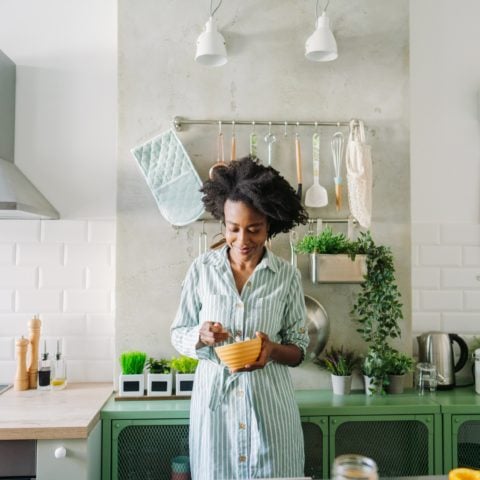Poop 101: What your stool is telling you about your health

Poop: Chances are, hearing this word elicits one of three responses: Either you’re loling like a child, blushing with prudish embarrassment or using it as an excuse to launch into a TMI toilet bowl confessional. But aside from that over-sharing friend (we all have one, am I right?), most of the time, the topic of poop is used as a punchline and is rarely an issue discussed with any kind of thought or seriousness. And why not? The truth is, our poo is a window into how our bodies are functioning. It shouldn’t, in theory, be any different than sharing any other health revelation.
Self-proclaimed poo whisperer, nutritionist and acupuncturist Melissa Ramos is on a quest to spread the word about why shit-talk is so important. “It’s nothing to be ashamed of—everyone poops!” she says. “The more open we can be to talking about it, the more mindful we can be about our health and how we’re treating our bodies.”
Yes, everything from the size, colour, shape and consistency of what we leave in the toilet is a major indicator of what’s going on with our health. Dehydration, food intolerances, lack of nutrition—according to Ramos, poop is a litmus test for so many different ailments. “The more we can open up about it, the more people will start to ask the right questions about their health and even begin to question their food choices,” she says. Read on to learn what your poop is trying to tell you:
Colour
Ramos says healthy poop should be 50 shades of brown. But don’t panic if you see a different hue before you flush. It could be the result of a number of things: Anyone who is a fan of beets (guilty) knows that some foods’ colours can drastically alter the shade. Purple, red or black poop, post-beet-binge, is no biggie. But if you can’t directly link it back to eating beets or if it is ongoing, check in with the doc. “It could be indicative of internal bleeding,” explains Ramos. Dark red or black may be the result of bleeding higher up in the digestive tract, whereas a bright shade of red shade is more likely due to bleeding in the lower intestines, often a sign of internal hemorrhoids. Green poop is usually nothing to worry about. It could be a symptom of your love for kale or could be a result of super-fast digestion, which is often accompanied by a looser consistency (read: upset tummy). Regularly taking iron supplements can also cause a green pigment. Yellow poop could be caused by excess fat in the stool due to issues with absorption, such as celiac disease. Finally, grey poops could indicate a lack of bile in the poop that could be because of a blockage in a bile duct. If you’re not seeing a “chestnut brown,” as Ramos calls it, or something close to it, it’s best to contact your physician to make sure everything’s A-OK down there.
Shape
“Your poop should look like a dog’s tail, so smooth and long,” says Ramos. “Not like a baby’s arm, which is bumpy.” Those thick and lumpy formations or small, hard-to-pass drops, which Ramos calls “pellet poop,” could be from not drinking enough H2O. “Pellet poop is quite common and usually from dehydration, not enough fats or poor fat assimilation,” she says. Ramos also says that soft, loose stools or diarrhea could mean that something is off with your eating. “Loose poops are usually a sign of a food intolerance—especially when it fluctuates from constipation to loose.” Take note post-flush, as well. Did your bowel movement leave remnants in the bowl? “You want to make sure there are no streaks left in the toilet bowl, and if there are, it means that there’s mucous that needs to be removed from the diet—think sugar, gluten and dairy.”
Sink or swim
The sink versus swim debate is as contentious as the cardio versus weights argument. The most popular consensus when it comes to crap: Floating is not ideal. Common reasons for floaters are excess gas in the intestinal tract and malabsorption of nutrients. Most of the time, it’s linked to foods that don’t agree with you. For example, many people who have trouble digesting lactose get swimmers after an ice-cream indulgence. If your poop simply won’t sink, focus on clean eating. If it still doesn’t work itself out and lasts more than a few weeks, then it’s time to call an MD for some professional advice.
How to improve your poops
Truth be told, I don’t know anyone who has perfect poops all of the time. Most of my GFs are either ridden with constipation, bloating or food sensitivities. Fortunately, there is hope for us all, but it involves making some changes where eating habits are concerned. “First and foremost, remove the gluten,” says Ramos (and we groan). “I know some people think it’s a fad, but I’ve seen thousands of women’s health improve from removing it.” Not surprisingly, dairy is next on the chopping block, as it is not only a common dietary sensitivity, but also an inflammatory food. To keep the bacteria balanced, critical for gut health, add in a good probiotic. “My favourite are those from Natren, the only probiotics in North America that meet EU standards.” And to beat the bloat, Ramos suggests: “Try out a bitters tincture like St. Francis Canadian Bitters Combo about 5 to 10 minutes before each meal.”
Happy pooping, and don’t forget to look before you flush!








